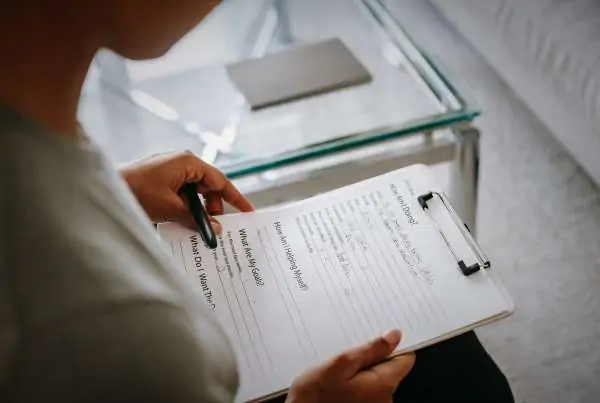How does depression affect teens? What does teen depression look like? When exactly is it depression? And when is it moodiness?
While being a teen can be tough, there are a few telltale characteristics that set depression apart from typical teenage angst. Both teens and parents should keep an eye on these characteristics and how they might affect their loved ones and closest friends.
How Does Depression Affect Teens?
So, how does depression affect teens? And what does it look like?
At first glance, depressive symptoms match closely with teenage despair. Depressed teens can be irritable, difficult, might be less likely to respond to being called, and will hole up in their rooms for hours, if not days, at a time. Concerned parents might have a tough time telling a depressive episode apart from a bad breakup.
But one key aspect of depression is time. Depressive symptoms don’t show up for a few days or a week, then disappear. Your teen may take months to get over a breakup, but they aren’t going to be spending those months at the bottom of an endless emotional pit – they may hit the bottom at some point, then slowly, steadily climb out of it.
Depression, on the other hand, shackles you to the seafloor and doesn’t let you go for weeks, months, and sometimes even years.
Signs of Depression in Teens
Some people diagnosed with a depressive disorder will bear the brunt of the condition for a few weeks at a time, then experience a lull in symptoms before it comes back in full force. Others experience a lower intensity of depression symptoms but at every waking moment. Depressive symptoms can come and go at any point, with no warning and no clear cause. They may include:
- Deep sorrow, feelings of worthlessness, or guilt for no reason.
- Extremely low self-esteem or active self-loathing/deprecation.
- A loss of interest in old hobbies and activities.
- A significant change in diet and appetite (dramatic weight gain or dramatic weight loss).
- Restlessness and insomnia/oversleeping, poor sleep habits.
- Sluggishness and fatigue that won’t go away with rest.
- Total loss of motivation, struggle to get up, difficulty with routine (poorer physical hygiene).
- Recurring suicidal thoughts or attempts, self-harm, extreme risk-taking, growing pessimism, and cynicism.
- Unexplained aches and pains and episodes of nausea.
If your teen is upset over something, it may be part of their depression, or it may be a normal teen reaction to an upsetting event. Telling these two apart requires open communication and a willingness to regularly check in with your teen to keep track of their moods and realize when something seems off.
How Is Teen Depression Diagnosed?
Depression comes in many forms. These are called mood disorders, and they include most mental health conditions that center around extraordinarily low or extraordinarily high moods (symptoms of depression and symptoms of mania). Common depressive disorders include:
- Major depressive disorder: this is the most commonly diagnosed depressive disorder and is often known as clinical depression.
- Dysthymia: this is a long-term or chronic form of depression, usually involving milder symptoms.
- Bipolar disorder: this mood disorder shares symptoms of depression as well as mania or hypomania.
- Premenstrual dysphoric disorder: this form of severe depression is a debilitating form of PMS. Symptoms occur within the first week of every period and often get worse with age until menopause.
- Postpartum depression: postpartum depression or peripartum depression is diagnosed before and/or after labor and childbirth.
- Seasonal affective disorder: this form of depression is distinctly tied to a change in seasons, usually from autumn into winter. However, some teens also experience summer-type seasonal affective disorder.
Diagnostic Criteria for Depression
Different depressive disorders have different diagnostic criteria. If a doctor suspects a patient is depressed (during a routine screening, for example), they may be referred to a psychiatric professional for a full diagnosis.
While conditions like depression are not usually diagnosed through blood tests or imaging scans (with unique exceptions) like many other medical conditions, there are certain tests that doctors can conduct to determine whether a teen requires psychological treatment. These tests include one-on-one conversations, a thorough medical and family background, and an observation of a teen’s symptoms and behavior over multiple weeks.
Conditions like major depressive disorder can be identified in about 8.4 percent of the population. But while this particular form of depression is more common than others, it’s also important to note that there are many conditions that are harder to identify or that might be misdiagnosed as a different or more common form of depression. Some mental health conditions might share a few symptoms with depression but have a very different cause or psychological mechanism of action and require a completely different type of treatment.
Depression and Related Disorders
Depressive symptoms may be part of a different diagnosis, or a diagnosis of depression may be one of multiple disorders a teen is struggling with. Teens with depression are much more likely than their peers to also struggle with the following:
- Anxiety disorders (such as generalized anxiety disorder)
- Substance use and co-occurring disorders (addiction, both to substances and behaviors, like gambling)
- Personality disorders (especially borderline personality disorder)
- Trauma disorders (such as post-traumatic stress disorder)
- Another mood disorder
Don’t count out the possibility of depression just because your teen may exhibit signs of a different mental health problem. In many cases, these disorders are intertwined, sharing certain risk factors or causes, and contributing to each other in different ways. For example, a teen struggling with addiction may be more likely to suffer from bouts of anxiety or depression as they go through recovery and rehab.
How is Teen Depression Treated?
If your teen is diagnosed with a depressive disorder, their first-line treatment plan may often involve one-on-one talk therapy and modern antidepressants. These are the most effective and most commonly prescribed treatment methods for conditions like major depressive disorder.
Certain other disorders may involve different treatments – such as mood stabilizers for bipolar disorder or birth control for premenstrual dysphoric disorder. If first-line treatments fail, a doctor may prescribe alternative treatment plans. This is where psychiatric facilities, outpatient clinics, and residential facilities for teens can help, especially if comorbid health conditions or a serious risk of personal harm are involved.
For more information about treatment for teen depression, contact Visions Treatment Centers.








